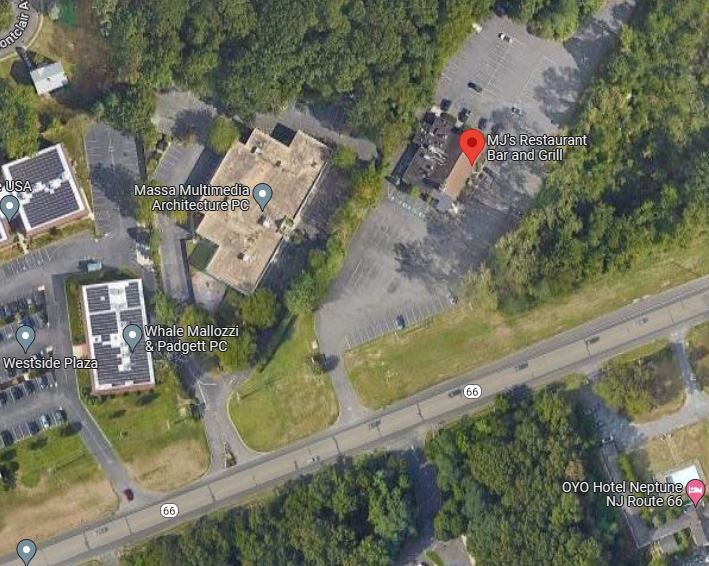First Highway Access Case Published In Years – Same As It Ever Was
 For the first time in several years, the New Jersey Appellate Division has published an opinion interpreting the provisions of the State Highway Access Management Act, N.J.S.A. 27:7–89 to –98 (“the Act”), and the State Highway Access Management Code, N.J.A.C. 16:47–1.1 to –14.1 (the “Access Code”). The IMO Route 66 case presented the Court “with its first opportunity in a published opinion to address certain provisions adopted in 2018 that extensively revised [the Access Code],” and since our firm routinely handles highway access cases, we felt it was necessary to blog about it.
For the first time in several years, the New Jersey Appellate Division has published an opinion interpreting the provisions of the State Highway Access Management Act, N.J.S.A. 27:7–89 to –98 (“the Act”), and the State Highway Access Management Code, N.J.A.C. 16:47–1.1 to –14.1 (the “Access Code”). The IMO Route 66 case presented the Court “with its first opportunity in a published opinion to address certain provisions adopted in 2018 that extensively revised [the Access Code],” and since our firm routinely handles highway access cases, we felt it was necessary to blog about it.
The pivotal legal issue before the Court in IMO Route 66 was “whether the roadway project’s replacement of appellant’s direct access to State Highway 66 (“Route 66”) through an existing driveway with access through a shared driveway connecting to an adjacent landowner’s parcel comprises a “revocation” or “removal” of appellant’s means of access, or, alternatively, whether the change is simply a “modification” of access.”
Here are the relevant facts: the appellant-property owner owns a single-story office building situated on the westbound side of Route 66 in Neptune (the “subject property”). The subject property is directly adjacent to a bar/restaurant. Currently, a motorist driving eastbound or westbound along Route 66 can turn into the subject property through a driveway entrance connecting to the highway. Westbound motorists on Route 66 make a right turn into the subject’s driveway, whereas motorists going eastbound must wait for opposing traffic to clear and then turn left across Route 66 into that existing driveway.
In November 2020, the Department’s Office of Access Design (“the OAD”) notified the property owner of its plans to change Route 66 in a manner that would affect the subject property’s access to the highway. In April and June 2021, the property owner and counsel attended informal meetings with the OAD to discuss the owner’s objections to the proposed plan. In August 2021, the OAD informed the owner it had decided to modify the driveway as the OAD had proposed. Thereafter, the owner filed an administrative appeal of the OAD’s determination. Two days of formal hearings ensued, presided over by the Director of the Department’s Division of Right of Way and Access Management, pursuant to N.J.A.C. 16:47–11.3(f). The OAD presented testimony from a supervising engineer in the OAD, and a project manager of the firm undertaking the Route 66 re-configuration. The property owner also testified, along with an engineering expert.
The change to the subject property’s access was proposed in conjunction with a State highway project to improve capacity and safety of the highway corridor by expanding Route 66. The OAD’s final access plan for the subject property proposed replacing the subject’s existing driveway with one driveway shared with the adjacent restaurant. This plan also required the State to obtain an easement from the restaurant for a portion of the shared driveway (and to relocate the property owner’s signage and four parking spaces). The owner objected to the OAD’s final plan, and instead proposed an alternative that would retain separate driveways onto Route 66. After hearing the testimony and closing the administrative record, the Director issued a final agency decision adopting the OAD’s proposed plan as a “modification of a driveway.”
Determining the plan to be compliant with the Access Code, the Director made several findings. First, the Director found the shared driveway plan promotes public safety, noting that the Access Code “encourages the sharing of driveways . . . to minimize the number of driveways on the State highway system[,]” N.J.A.C. 15:47–1.3(l). Second, the Director determined that the property owner’s proposed alternative plan entailed a non-compliant design because it does not have the sufficient twelve-foot edge clearance required under the Access Code. Third and lastly, the Director found insignificant the property owner’s stated concerns about “overflow parking” from the restaurant and “maintenance and operation of the [s]hared [d]riveway” because neither presents a departure from the status quo.
On appeal from the Director’s final agency decision, the property owner contended that the Department “erroneously deemed the new configuration a modification rather than a revocation or removal of access. This error is argued to be one of consequence because, under the statutory and regulatory scheme, the Department’s obligation to pay for the costs of reconfiguring the access to Route 66 is more explicit for a revocation or removal than for a modification.” In addition, appellant contended that the Department’s adoption of its own proposed plan was arbitrary and capricious.
As an initial matter, the Appellate Division applied a limited standard of review because appellate courts will only reverse an administrative agency decision that is “arbitrary, capricious, or unreasonable, or not supported by the evidence in the record as a whole.” The Court also acknowledged that the Act recognizes that “[e]very owner of property which abuts a public road has a right of reasonable access to the general system of streets and highways in the State, but not to a particular means of access.” N.J.S.A. 27:7–90(e). However, “[t]he right of access is subject to regulation for the purpose of protecting the public health, safety and welfare.” Id.
The Court recognized that N.J.S.A. 27:7–94 provides the statutory framework for the “revocation” of a property owner’s access to a State highway. That statute gives the Department authority to revoke State highway access only when alternative access is provided under a two-pronged standard for reasonable access.
Corresponding with the statutory framework in the Act, the relevant Access Code was first adopted in 1992 and was most recently revised in 2018 after a lengthy comment process. The Court noted that the Access Code defines “revocation” as “termination of an access permit by the Commissioner, when all State highway access is removed after a determination that alternative access will be available for use at the conclusion of the highway project.” N.J.A.C. 16:47-2.1 (the underlined portion was added in the 2018 revisions). Additionally, “modification of driveway” is defined as “changes to driveways in conjunction with the implementation of a State highway improvement advanced by the Department or others, with Department approval, which changes the number of driveways, the width of the curbline opening of a driveway by more than five feet, or the location of a driveway by more than [ten] feet. It includes replacing all ingress or all egress between a State highway and a lot or site with ingress or egress via a private easement on a different lot or site…” (the underlined portion was added in the 2018 revisions).
Applying these definitions, the Court concluded that “because the Department’s plan maintains [the subject property’s] access to State Highway 66 using a private easement, it literally satisfies the definition of a “modification.” The plan replaces “all ingress or all egress between a State highway and a lot or site with ingress or egress via a private easement on a different lot or site.” N.J.A.C. 16:47–2.1 (emphasis added). The plan therefore is not a revocation or a removal of access.” Moreover, the Court opined that the Director’s decision was not arbitrary and capricious because the testimony at the hearing “amply supports” that Director’s conclusion that the proposed alternative designed presented significant risks to safety and traffic flow.
The Court’s opinion and conclusion are significant because the fiscal and operational consequences of classifying a change in State highway access to a property as a “modification” rather than as a “revocation” (or removal) could be significant. If the change rises to the severity of a “revocation,” then N.J.S.A. 27:7–94(d) imposes several obligations upon the Department such as providing all necessary assistance to the property owner in establishing the alternative access, and erecting suitable signage on the State highway, and on connecting local highways, directing motorists to the new access location. The Act defines “necessary assistance” as including the “costs and expenses of relocation and removal associated with engineering, installation of access drives in a new location or locations, removal of old drives, on-site circulation improvements to accommodate changes in access drives, landscaping, replacement of directional and identifying signs and the cost of any lands, or any rights or interests in lands, and any other right required to accomplish the relocation or removal.”
On the other hand, the statute contains no comparable mandates for the Department to pay the costs of improvements, engineering, construction, landscaping, signage, and other measures in a situation of access “modification.” However, the Access Code regulations do prescribe that “[a]s appropriate, the Department will provide all necessary assistance to establish changes in driveways pursuant to [the modification] subchapter.” N.J.A.C. 16:47–11.1(e).
To the layperson, the Court’s decision is a dense and confusing recitation of the relevant provisions of the Act and the Access Code. If you are confronted with a proposed highway access modification, revocation, or a governmental taking and need guidance regarding the proper procedure to follow, please contact McKirdy, Riskin, Olson & DellaPelle, P.C. to speak with an experienced attorney. To view the entire IMO Route 66 decision, click here.







